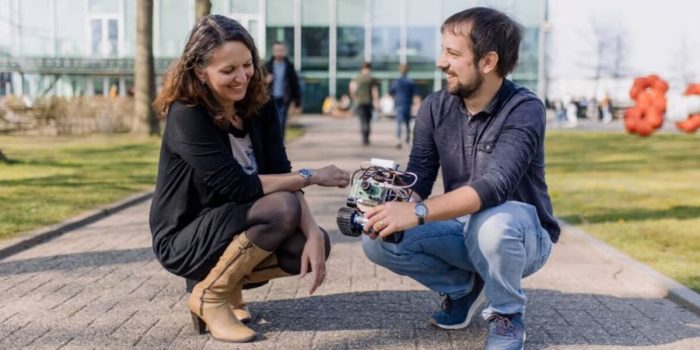In pursuit of technological innovation and modernization, a ground breaking study was conducted by researchers from two of the esteemed universities: University of Groningen in the Netherlands and Bielefeld University in Germany, and have developed a robot that has been inspired mostly from the unique and amazing navigation abilities of a mere fruit fly.
A fruit fly has a very tiny and miniscule brain but than doesn’t come close to its remarkable navigational skills that it possesses as it flies while effortlessly avoiding obstacles and interferences in its path. The researchers aimed to use this efficient and low-energy navigation technique in their robot design.
The key to the fruit fly’s navigation lies in its ability to process visual information and adjust its flight path accordingly. By analyzing the motion of surrounding objects, fruit flies can infer distances and navigate through complex environments with minimal computational resources. The researchers replicated this process by algorithmically mimicking the neural activity responsible for motion processing in fruit flies’ brains.

The resulting robot, engineered by Thorben Schoepe from the University of Groningen, is compact yet highly effective. Equipped with a neuromorphic network inspired by the fruit fly’s brain, the robot autonomously steers towards areas with the least movement, enabling it to avoid collisions and navigate around obstacles with ease. This approach contrasts with conventional robotics, which often rely on resource-intensive machine learning algorithms.
The robot’s ability to navigate efficiently in cluttered environments has significant implications for various applications, particularly in scenarios such as disaster response where terrain may be challenging to navigate. Moreover, its low energy consumption makes it well-suited for prolonged operations in remote or resource-constrained environments.

This study represents a great and significant advancement in the field of neuromorphic hardware and robots. By drawing inspiration from the nature that is all around us, scientists have been able to observe, study and finally develop a robot unique enough that is capable to perform complex tasks with minimal computational resources which reflects the efficiency of biological systems. Looking forward, the researchers also envision more advancements in the developments of such nature-inspired robots.
By equipping them with additional sensors, such as radars, these robots could enhance and bypass their own capabilities in navigation of diverse and various environments.
Moreover, the underlying principles of biomimicry and neuromorphic design could inspire the development of even more sophisticated robotic systems capable of tackling a wide range of tasks.
In summary, the development of a fruit fly-inspired robot represents a paradigm shift in robotics, emphasizing efficiency and biomimicry. By leveraging insights from nature, researchers have unlocked new possibilities for the design of autonomous robots capable of navigating complex environments with minimal energy expenditure.


